The 1940s was a decade shaped by war, but the Christmas spirit and the act of giving was still important to Americans, even in times of hardship.
For access to our complete magazine archive, including all of the advertisements from 1821 to present day, subscribe to become a member.
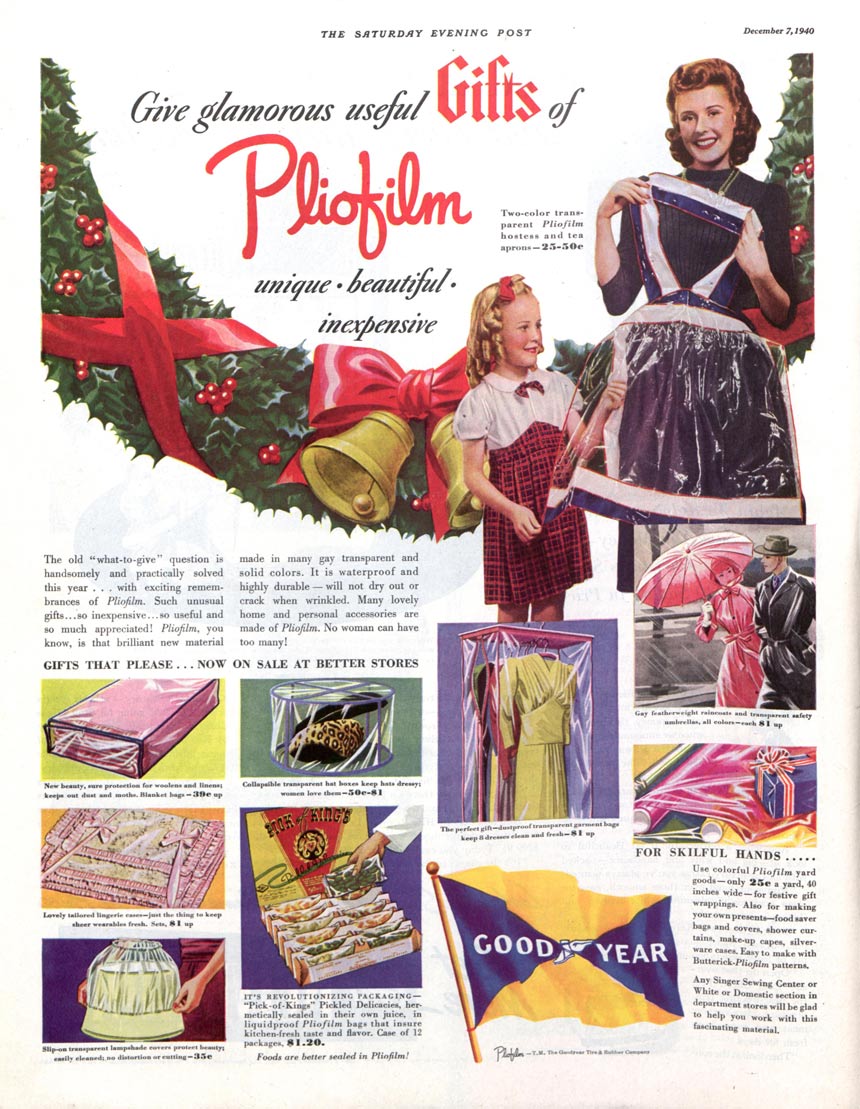
December 7, 1940
Pliofilm was a clear rubber-based plastic developed by Goodyear in 1938. As seen in this ad, it was marketed as a protective covering for food, clothing, and humans. A few years later, Pliofilm would play an important role in World War II, protecting weapons from water and sand on D-Day.
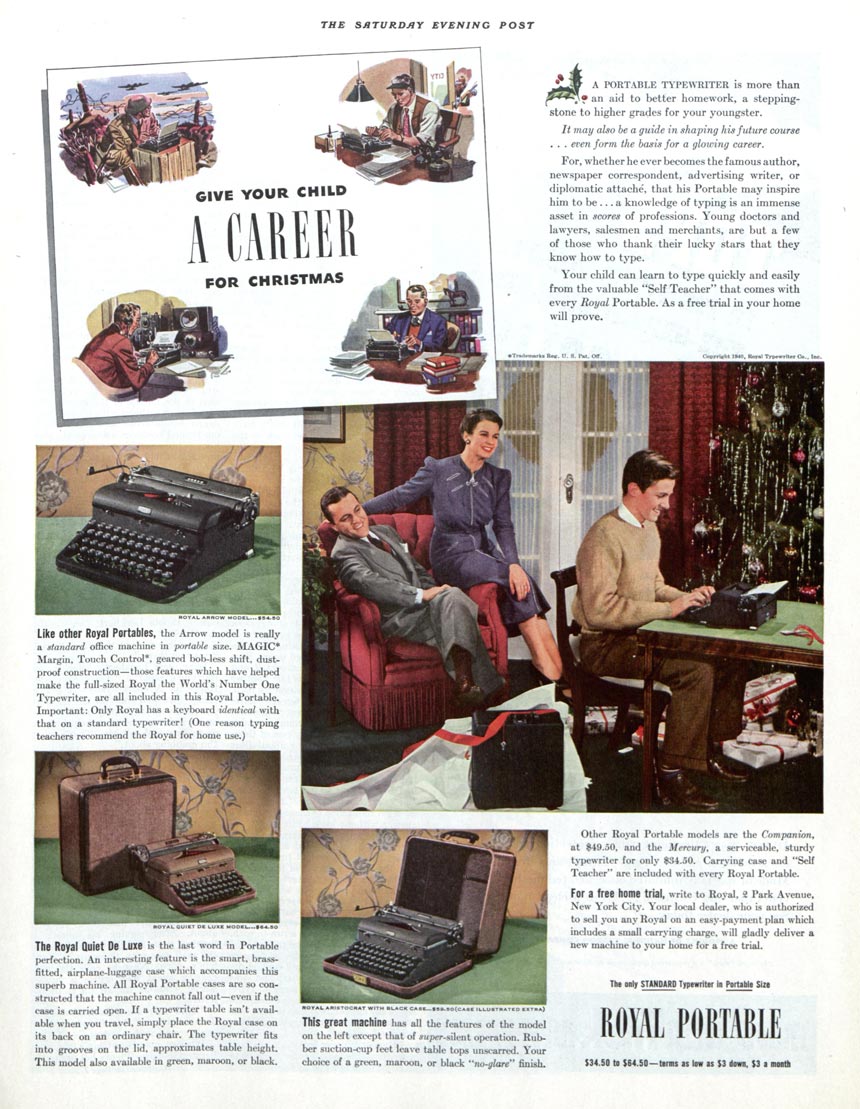
December 7, 1940
The Royal Portable company exhorted parents to “Give your child a career for Christmas” (well, male children, anyway). Seventy-five years later, we type on a different device, but it’s still very true that there “are but a few of those who thank their lucky stars that they know how to type.”
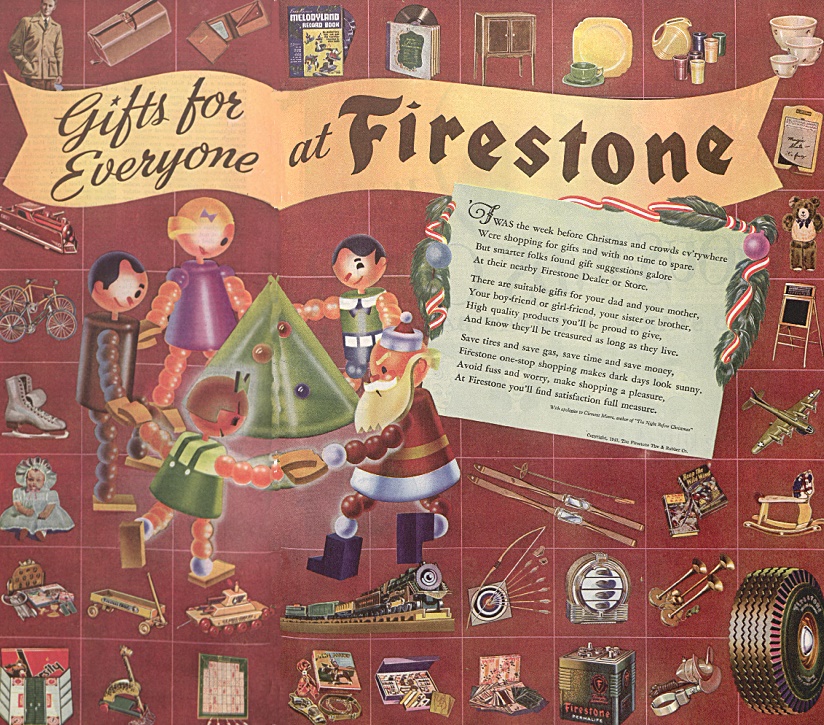
December 4, 1943
Sure, you could buy car batteries and tires from Firestone, but they also offered rocking horses, dolls, and ice skates through their catalog. In 1943, they were also busy making artillery shells and rubberized military products through their wartime production contracts.
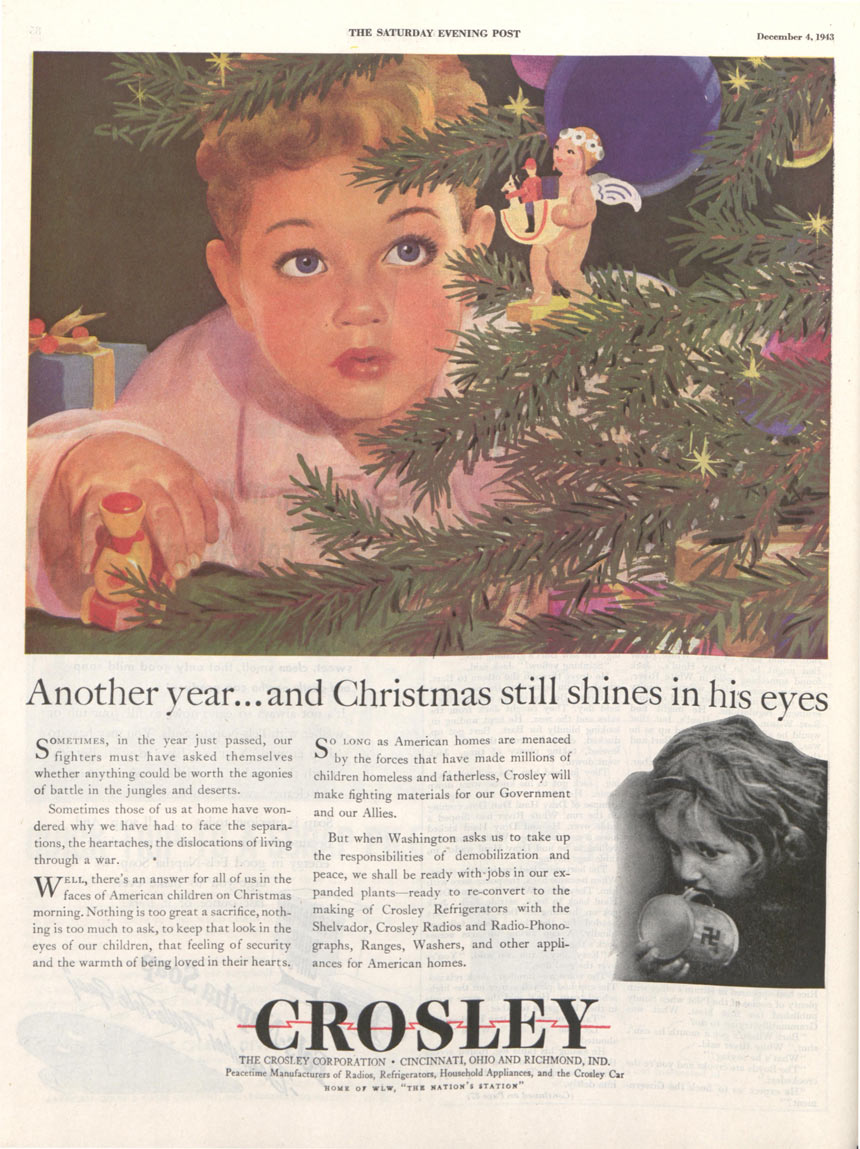
December 4, 1943
During the war, many American manufacturers shifted their production from bicycles and refrigerators to tanks and bullets. Crosley, a radio and appliance manufacturer, was one of them. But they wanted to assure Post readers that when the war was over, they could be counted on for ranges and washers once more.
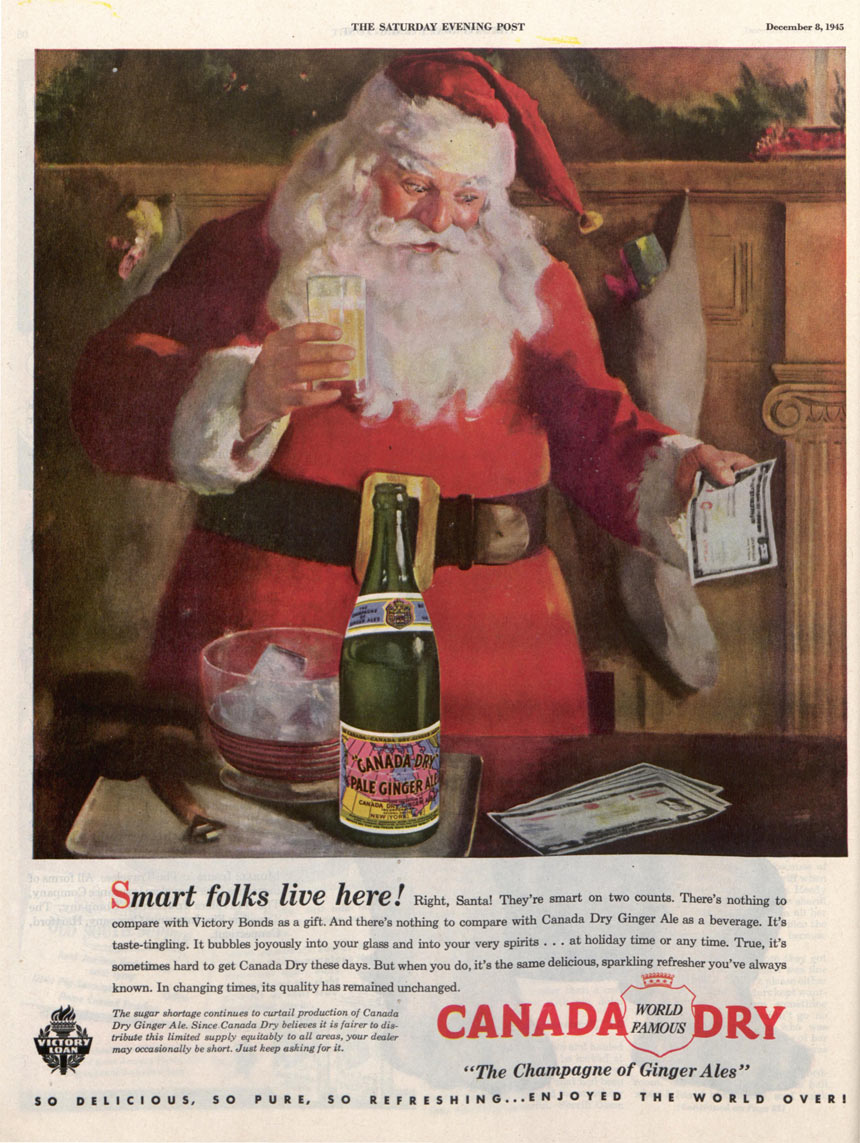
December 8, 1945
Even Santa could be affected by the war, and counted himself lucky to sip on a glass of ginger ale. Sugar rationing affected drink manufacturers as well as families, making sweet treats harder to come by.
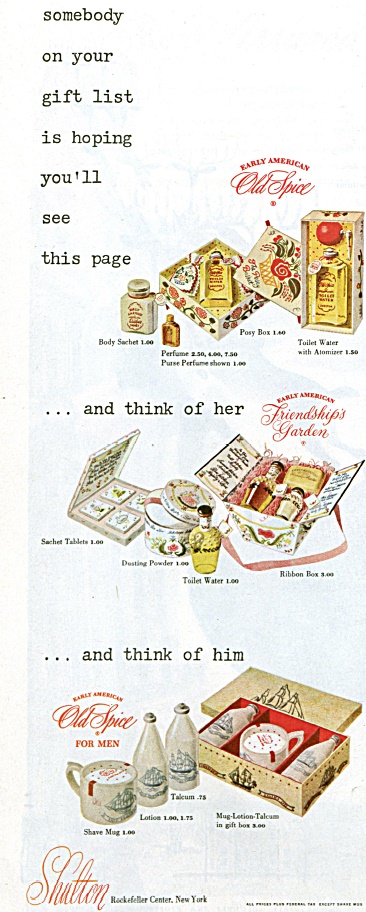
December 4, 1948
Old Spice is still sold in gift sets today, but in 1948 Shulton made versions for both men and women.
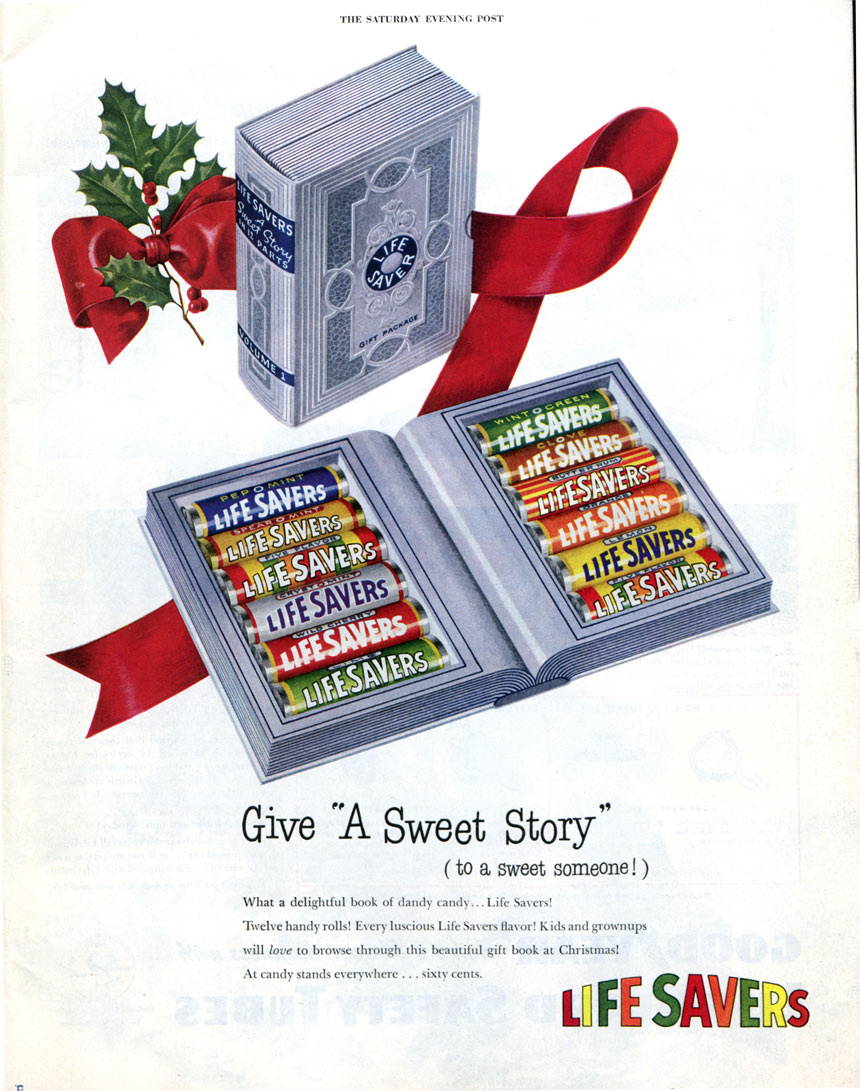
December 4, 1948
During World War II, other candy manufacturers donated their sugar rations to keep Life Savers in production so that they could be shipped to the Armed Forces overseas. Life Savers created their Sweet Storybook in the 1940s, and it’s been a favorite stocking stuffer ever since.
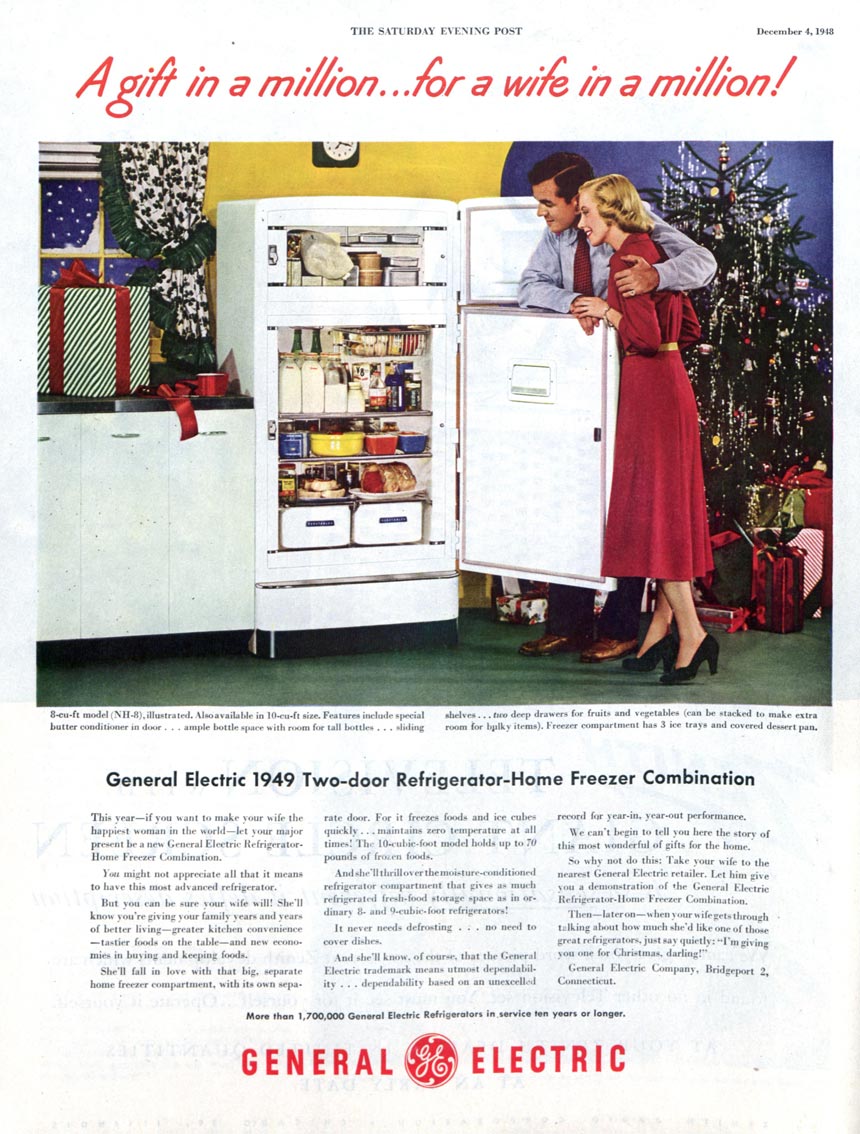
December 4, 1948
Don’t buy your wife a refrigerator for Christmas, no matter how nice it is.
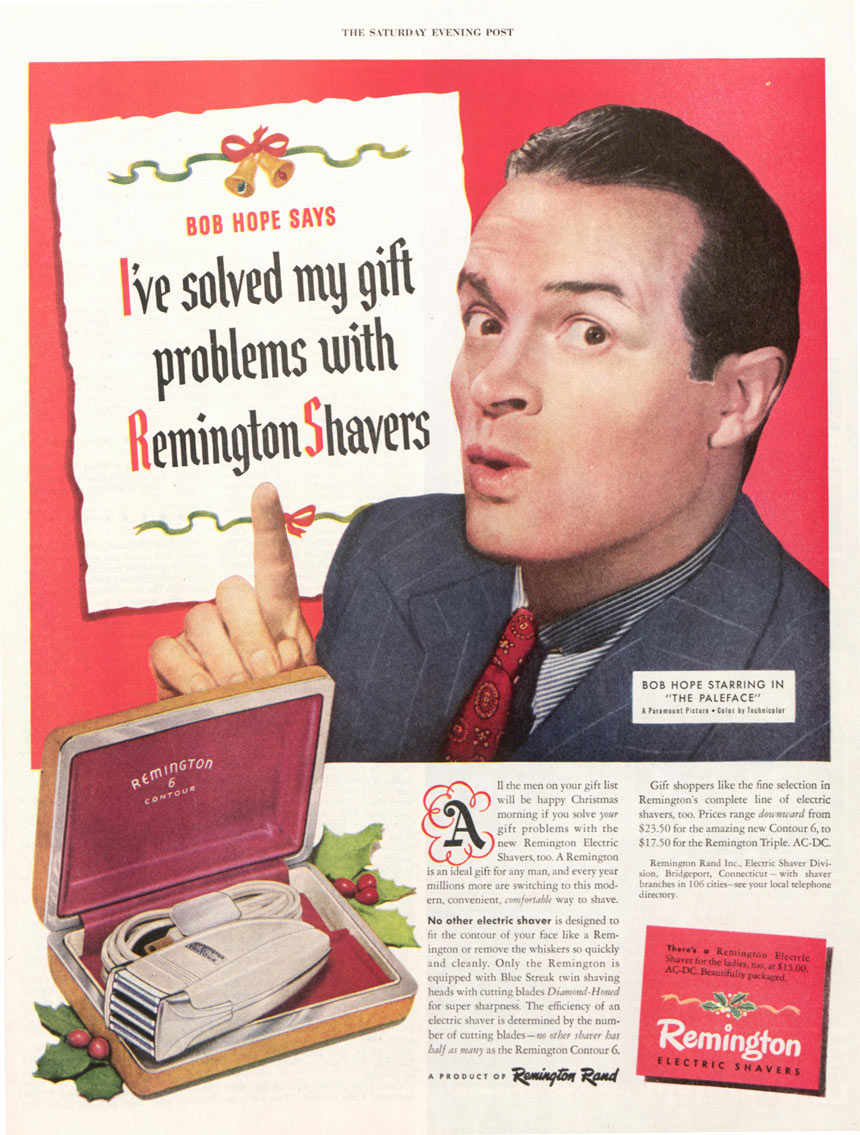
December 4, 1948
If magazine and television ads are any indication, electric shavers have been a perennial popular gift for men. The brand that Bob Hope sold ranged from $17-$26. Today, they’re about ten times more than that much.
Become a Saturday Evening Post member and enjoy unlimited access. Subscribe now
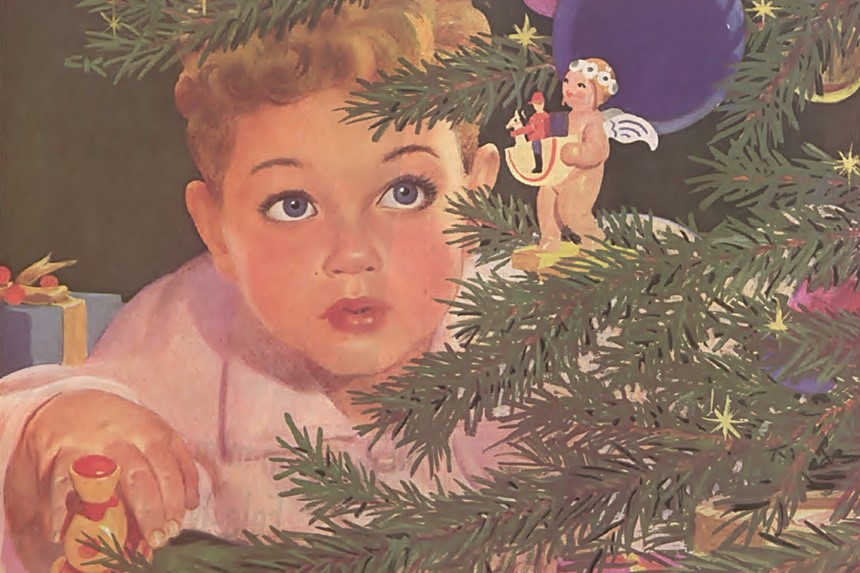
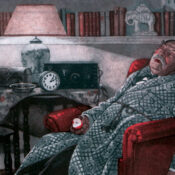


Comments
I enjoy seeing the old ads. I wouldn’t mind a lot of the gifts shown, though the toys in the firestone ad may explain why they dropped that part of their business. The artwork in the ginger ale ad was nearly as good as a Post cover.
December 15, 2018
Beverly J. Byington says:
This is wonderful, I hope it comes again in my copy of the Post. I am 89 and remember all these
things at Holiday times. I love this magazine and am giving Jack & Jill for Christmas this year
to two boys who take piano lessons from me. Merry Christmas everyone.
Most gifts in those days were of the practical nature.